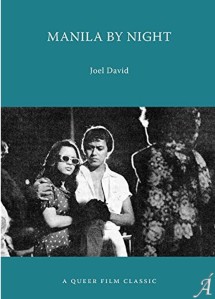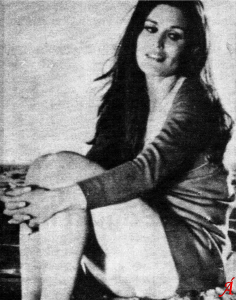The surge of renewed interest in the suspicious circumstances surrounding the death of too-young Pepsi Paloma in 1985 has still not raised any eyebrows regarding what subsequently happened to her rabble-rousing manager, Rey de la Cruz. Shot dead in the optical clinic where he lived, de la Cruz had deliberately cultivated an unsavory reputation – but mainly in his showbiz affairs. When Communist party renegade Felimon “Popoy” Lagman was also slain by unidentified assassins, the Bukluran ng Manggagawang Pilipino, which he led, mentioned that an arrest warrant for him still had to be served for the murder of de la Cruz. So the question of who killed de la Cruz, unlike the issue of whether poor Pepsi was murdered, appears to have been resolved, but only because his supposed killer can no longer attest to or deny the charge. [This article originally appeared in the Business Day supplement New Day (October 6, 1986: 12, 14), with the unqualified support and encouragement of the section editor, Daisy Catherine L. Mandap, who now heads the Hong Kong-based Sun publication; an earlier interview with Rey de la Cruz, along with other star-builders, appears here.] To jump to later sections, please click here for: Distinctions; JQ Connection; Trendsetting; Legacies; and Notes.
A tall leather chair behind an appropriately imposing table provides film personality Rey de la Cruz, incidentally Doctor of Optometry, with a suitable position from which to survey prospective applicants, patients, and interviewers who get to sit on depressed and low-backed receiving chairs. “I have always been a star-builder,” he smiles beatifically, “even when I was still a student. Everything you see here, without exception, comes from the blood, sweat, and tears I invested in my work in the movies.”
11011“Everything” I took to include an entire floor space of a relatively tall building in the Lilliputian backside of Quiapo, two blocks near the subject’s famed optical clinic, where a rugged male attendant directs correctly credentialed curiosity-seekers like me to search the doctor’s residence downstreet. “You won’t miss it,” he assures me, and sure enough, the first building that seems to assert an air of dignity in this polluted part of the district yields Rey de la Cruz’s name, and nothing else, for the fifth-floor portion of its directory.
11011The address where de la Cruz holds court will immediately impress the outsider with its overabundance of the trappings of fast accumulated wealth. A pair of gossiping old women, an alert girl Friday, a half-dressed teenage kid, and some children quietly at play make sure that you get ushered into the right parlor, instead of the kitchen, bathroom, or private chambers where, de la Cruz clarifies later, starlets Lampel Cojuangco and Mishelle Zobel, his latest acquisitions – rather, alagas, reside.
Dr. de la Cruz starts out by showing a recent issue of Asia magazine, which featured him in a sidebar on an article on the local bold-movie trend. “I was also voted ‘Most Controversial Guest of the Year’ in See-True”[1] – he points to a plaque on a side table – “and was interviewed for Channel 2’s Variety program as well as another international magazine.”
11011Then he quickly gets to the point. “I don’t understand why people take my controversial status against me. I provide a living for my discoveries, I give the masa the entertainment they want, and I make a living in the process – ano’ng masama duon? I even agreed to become barangay captain of Quiapo to be able to render more and systematic service to my fellowmen, and then a nuisance like Polly Cayetano questions my appointment, charges me in court for exploitation of minors, and calls me a pimp on the air. Sa dami ng sumasakay sa akin, kailangang mag-rationalize ako, otherwise matagal na sana akong nawalan ng pag-asa.”
11011Sooner or later it becomes clear to even the most casual observer that the very subject of Rey de la Cruz may require some rationalizing too. I had interviewed him a half-decade ago for an omnibus write-up on the state of star-building in the country[2] and, in contrast to pros like Jesse Ejercito and Douglas Quijano, he had seemed much more guarded and tentative way back then.
11011“Marami na akong na-build up,” he continues, “and each time na me kumakalas sa akin, I’d tell myself tama na, ayoko na. And then me bagong dumarating, me responsibilidad na naman ako, balik na naman sa star-building.”
11011At this point he cannot seem to resist a digression. “Tulad nung case ni Lala Montelibano – hindi ko naman intensyon na mang-iskandalo. I heard she wanted to break away from me, so when I learned she was appearing in See-True, I presented her with her real mother, as if to tell her, ‘We are all responsible for other people in our lives, so don’t forget whom you are responsible for.’ E siguro, her adoptive mother thought the real mother was there to get back Lala, di pati yung thirty-percent commission niya sa bata e mawawala, kaya ayun, nagkagulo na.”
11011Although aware that the incident has generated a generous amount of public outrage, de la Cruz will admit that at the most “I tell only white lies, in the interest of promoting a movie. Sino naman ba’ng hindi gumagawa nuon? Pero if ever I resort to a gimmick, ginigimikan ko lang ang totoo. Example: yung Tondo-girl gimmick ko ke Myrna Castillo, maraming nagalit doon dahil hindi raw kapani-paniwala na me ganung kaganda sa slum area. Nag-white lie na ako nung pino-promote yung launching movie niya, when I said na me tattoo siya sa boobs, pero it turned out na mas effective yung gimmick ko kesa sa promotion nung pelikula.”
11011In the long run, he has seen to it that, as far as he’s concerned, only good comes out of whatever vulgarities he foists upon the public to capture their attention. “Hindi alam ng marami,” he explains, “na behind all the publicity, I train my discoveries to become model citizens. Lahat ng social graces ini-introduce ko sa kanila. Pati sa acting, me workshop sila conducted at my expense, exclusively for them.” He proudly points out that two of his female stars have attained well-earned reputations as serious actresses, even though one of them – Rio Locsin – had a painful and public falling-out with him, and another – Sarsi Emmanuelle – has been having difficulty in sustaining her popularity because of alleged professional indifference.
“If you still cannot take what I’m doing,” he says between chuckles, “blame Joe Quirino.” As his journalism professor at the Manuel L. Quezon University, the inimitable JQ took him away by introducing him to Mars Ravelo and Jose “Doc” Perez. The former may account for his propensity in plotting komiks-like twists and turns to publicize his wards, but it is the Sampaguita Pictures mogul he credits for teaching him “the ABCs of star-building. All in all Doc gave me ten valuable tips, all of them confidential.”
11011That was twenty years ago, when the Stars ’66 batch of discoveries had a tantalizing effect on him, coming as he did “fresh from a small town in Cagayan, where I was the seventh among eleven children; ako lang ang bakla, ako lang ang napadpad sa showbiz, at ako lang,” he finishes with relish, “ang nakapagpaaral sa twenty-five na kamag-anak ko, some of whom are now big-timers in the States.”
11011He strokes a thinning crop of hair and directs his professorial mien toward a forever-gone era of innocence, of roses and lollipops and Zandro Zamora. “I was only twenty when I started out. I had ten thousand pesos, all my savings, to begin with, so I bought my first car, a second-hand Triumph Herald, para maging karapat-dapat kay Zandro Zamora. Bini-build up ko siya pero nasira ang ulo ko sa kanya, masyado ako naging possessive. We parted ways as friends – if he ever considered me a friend – pero since then babae na lang ang kadalasang bini-build up ko. I get too involved with my men, and then they get involved with my female discoveries, as in the case of Gil Guerrero and Myrna Castillo. People get the impression tuloy na pinapares-pares ko yung mga alaga ko.”
11011After he made it big with Rio Locsin in the mid-’70s, he launched Myrna Castillo (initially as Rio Locsin II, to replace the then already-gone original) and, after she paired off with Guerrero – only to lately return to de la Cruz – he launched his first batch of female starlets. Because of their literally commercialized designations they became known collectively as the “softdrink beauties”: Coca Nicolas, Sarsi Emmanuelle, and the tragic Pepsi Paloma, who figured in a messy rape case (capped by an exploitation vehicle) before she allegedly took her own life. Introduced along with them was what de la Cruz describes as “the only uncola, Myra Manibog.” Then the “hard-drink beauties” followed – Remy Martin, Chivas Regal, Vodka Zobel, and Brandy Ayala; only the last, according to de la Cruz, “has survived in showbiz. The rest are in Japan earning two thousand dollars a month each as live entertainers.”
De la Cruz’s arrival as a promo personality was accorded a dubious form of flattery during the early ’80s when his concept of launching discoveries in batches was imitated. Into the movie pages (as well as a few actual productions) marched the “street beauties,” who sported such throw-away appellations as Ayala Buendia, Aurora Boulevard, Remedios Malate, Lerma Morayta, and Bridget Jones. A parade of pulchritudinous hopefuls has been following suit since, assuming de la Cruz-inspired sobriquets like Lyka Ugarte, Claudia Zobel (another tragic waste), and, in keeping up with his latest batch, Cristina Crisol and Elsa Enrile.
11011Yes, he has decided to contribute his share to the political awakening of the country by presenting, on the heels of the runaway Lala Montelibano, the “revolutionary beauties,” complete with farcically flippant anecdote: “Nagkita-kita raw sila sa EDSA during the revolution, hindi na makauwi sa dami ng tao, so they decided to stay together with the rest of people power.” An enumeration of what sound like noms de guerre, instead of screen names, follows, showing that by now, the guy has crossed the line between wordplay and downright irreverence: “Aida Dimaporo, sixteen; Ava Manotoc, Vanessa Ver, and straight from Cebu, Lota Misuari, all nineteen; plus a tribute to my tormentor, Polly Cayetano, seventeen. I chose those names,” he hastens to add, “because I want people to become less emotional about political personalities. I’d like to see them smile when they hear those names.”
11011But what about the names’ real owners? “My legal research reveals that there’s no law against using other people’s names. Of course I might desist if the origs want me to, pero I’m sure that if they see the girls, with their beauty and sex appeal, baka matuwa pa pati sila.”
11011What de la Cruz tries his best to suppress is the notion that his girls are “available” – the subject of his interview with Asia magazine. “If ever they do it on their own, I have to make sure na hindi naa-associate yung ginagawa nila sa akin.” He applies the same tack to an even more sensational recent development in local film practice: “Beware, I tell them, if your director wants you to do penetration scenes, because I can’t be around to keep watch all the time. Ask yourselves na lang, in a practical way: gusto niyo ba, type niyo ba yung makakapareha niyo, tama ba yung bayad sa puri niyo, and dapat, money down. Kung maaatim ng kalooban niyo e bakit hindi, basta hindi kayo pinupuwersa. Pero kung ako ang tatanungin kung ano’ng advice ko, sabihin niyong sabi ko, huwag.”
By a mysterious coincidence a side door opens, and out drifts a pale and fragile wisp of a girl in housefrock, smiling shyly at everyone present and receding before anyone could figure out what she was about. “Si Lampel Cojuangco,” Rey de la Cruz whispers, almost conspiratorially. “Hindi na ’yan mabobola ng producer sa mga penetration scenes.”
11011For every extreme development de la Cruz has required a balancing factor; it must be alarmingly reflective of the times that he claims to have resorted recently to, of all things, Bible-reading. “Dito ko kinukuha ngayon yang mga lessons na ina-apply ko sa kanila,” he says, picking up a voluminous edition from his desk and putting it down just as quickly.
11011One wonders how far he is willing to enforce the scarily stiff Judeo-Christian tradition on his present and prospective talents. “Me male applicant pa nga aka dito from the States” – he takes out photos of a mean-looking Oriental in progressive stages of dishabille and spreads them over the scriptures – “at mahina na yung dalawang walk-in applicants a day, from both sexes, sa akin. That’s because I can claim now that my stars get sold partly on the basis of their association with me. Pati masa nakikilala na yung hitsura ko.”
11011Talking about his image and popularity leads him to articulate his longing for “a legitimate ‘bold’ center, para magka-outlet ang artistic bold films, para ma-develop ang taste ng local audience, at higit sa lahat, para may pagkakakitaan ang mga taong umaasa sa ganung klaseng hanapbuhay, kesa mapilitang gumawa ng mas masama pa. I don’t understand why people get mad when the censors get strict, tapos they get mad again when there are bold films released. Most of all I don’t mind being associated with bold, pero ayun na nga, it’s always taken against me.”
11011Maybe you’ve become a symbol of sorts? I suggest. Rey de la Cruz smiles. He seems to like the idea.
Notes
[1] A then-popular TV talk show featuring mostly film personalities, hosted by Inday Badiday (screen name of Lourdes Jimenez Carvajal, sister of magazine editor Letty Jimenez-Magsanoc).
[2] “Star-Building Pays,” Times Journal (May 26, 1980): 21, 23.














 ORCID ID
ORCID ID 